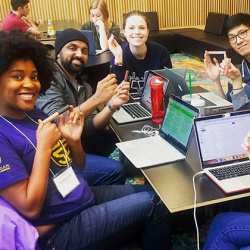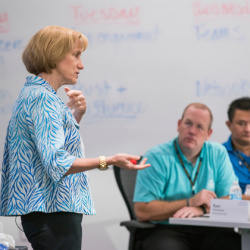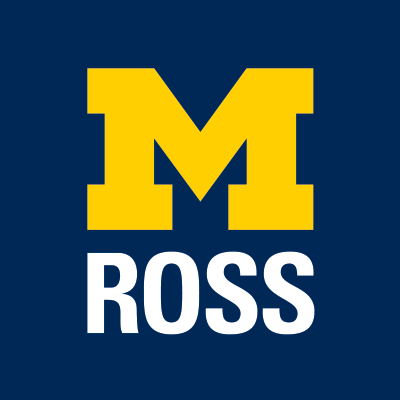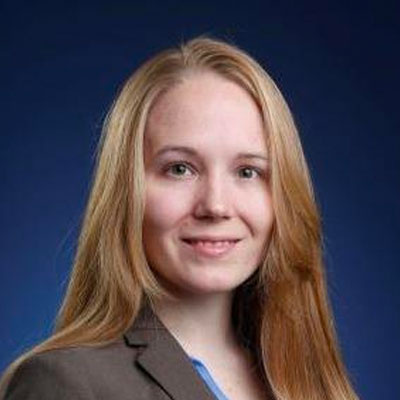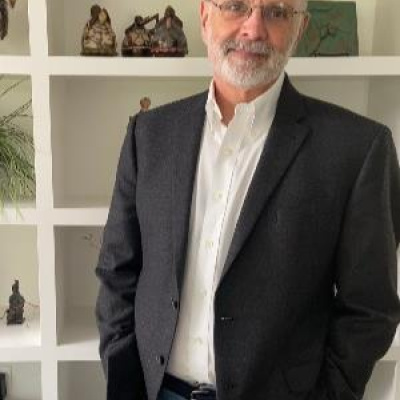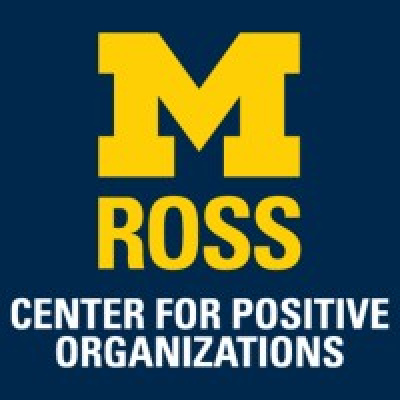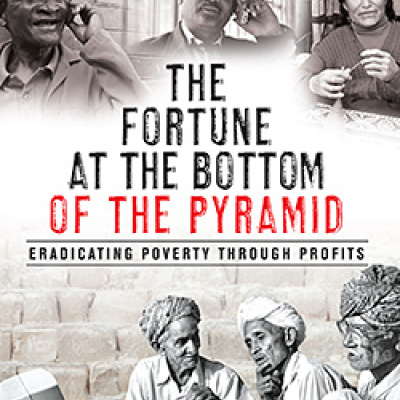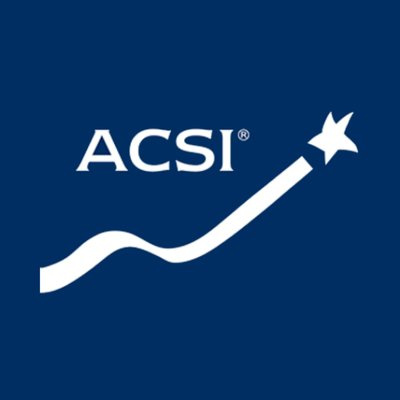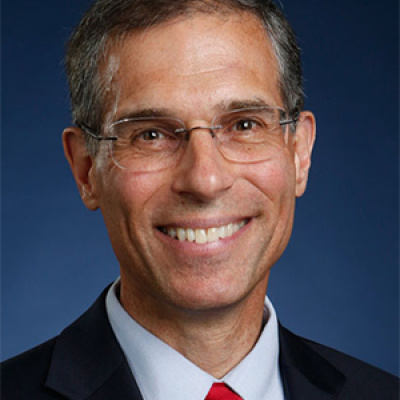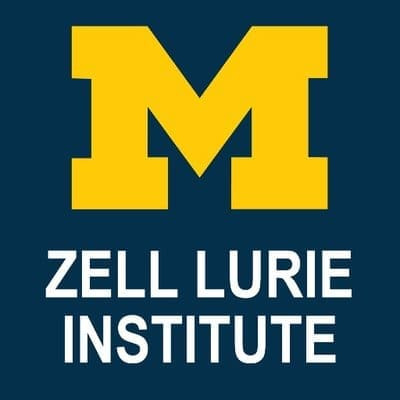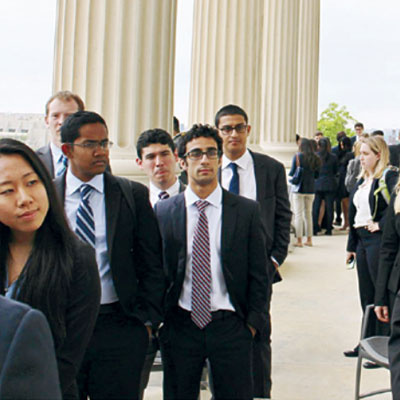Explore the faculty research, thought leadership, and groundbreaking philosophies that established Michigan Ross as one of the world’s top business schools.

Under the leadership of Marian Krzyzowski, Michigan Ross launched the Domestic Corps in 1992 with financial support from the United States Department of Education Fund for the Improvement of Post-Secondary Education. The Domestic Corps provided leadership development and action-based learning opportunities for Ross students while providing critical business assistance to the non-profit community in the United States. For 15 years, the Domestic Corps placed hundreds of students in more than 100 non-profit organizations nationwide, where they worked on projects in economically distressed and culturally diverse communities. That included Native American communities, inner city community-based organizations, and rural non-profits. The Domestic Corps also partnered with the University of Michigan's Neighborhood AmeriCorps Program to place MBA interns in 20 more than Detroit community-based organizations. The Domestic Corps projects helped raise millions of dollars, won national awards for community and economic development, and transformed numerous organizations while simultaneously providing students with management experience in challenging contexts and instilling a sense of corporate responsibility and social justice.
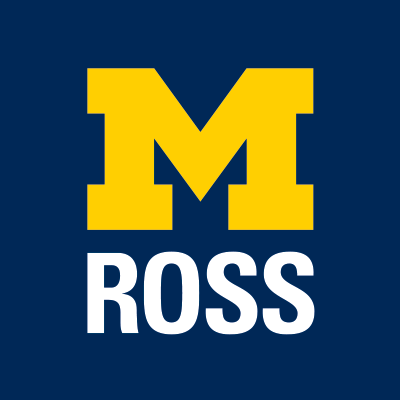
In 1999, former Michigan Ross finance faculty member Josh Coval co-authored a paper that is among the top 50 most-cited papers in finance. The paper shows one of the most intriguing patterns in individual behavior. The strong bias in favor of domestic securities is a well-documented characteristic of international investment portfolios, yet this paper shows that the preference for investing close to home also applies to portfolios of domestic stocks. Specifically, U.S. investment managers strongly prefer locally headquartered firms, particularly small, highly leveraged firms that produce nontraded goods. These results suggest that asymmetric information between local and non-local investors may drive the preference for geographically proximate investments, and the relation between investment proximity and firm size and leverage may shed light on several well-documented asset pricing anomalies.

As the worlds of trade and culture were globalized in the 1980s, consumers worldwide saw standardized global brands enter and grow in their local markets, displacing local brands that had been dominant for decades. But what were consumers seeing in these global brands, and why were consumers switching to them? How could local brands fight back? These timely and important questions were addressed in a series of research papers by Michigan Ross Professor Rajeev Batra and his co-authors from 1999 through 2019. They showed that if consumers perceived brands as being global, they assumed these brands were of higher quality, capable of bestowing more prestige and status to their buyers, and would bring these buyers closer to the imagined lifestyles of consumers in the home countries of these brands. These papers have been cited over 6,000 times, have been nominated for and won multiple best-paper awards in journals and societies of international marketing, and have been included in lists of the 10 papers in the last 30 years that have made the most contribution to the international marketing literature. Today, as the lure of globalization seems to be receding and local brands seem to be winning again, this work highlights the tensions and trade-offs at play.

Every innovation or new product development team faces a fundamental tension: When does one transition from the ideation to the execution phase? Too early a transition risks missing a great yet unrealized idea, and too late a transition risks being unable to bring the product to market on time. This significant and ubiquitous tension poses a challenge for researchers because of the nuanced nature of imagination and creativity and the need to combine that with creating an actual item based on one’s designs. In “Ideation-Execution Transition in Product Development: An Experimental Analysis” (Management Science, 2018) by Michigan Ross Professors Stephen Leider and William Lovejoy, as well as their colleague Evgeny Kagan from the Johns Hopkins Carey Business School, the authors use a novel experimental design to reveal some expected outcomes (later transitions do not change mean performance but increase variance and risk significantly) and some unexpected ones (it is not so much the timing of the transition that drives mean performance, but rather who has decision rights). Specifically, designers should not make the transition decision; the timing should be an exogenously imposed constraint. This external requirement significantly changes designers’ behaviors and results.

In her research published in the American Economic Review, the Review of Economics and Statistics, the Journal of Human Resources, Health Affairs, and other outlets, Professor Sarah Miller has used quasi-experimental methods to evaluate whether receiving improved access to health care in utero, in early childhood, and throughout childhood improves outcomes in adulthood. Miller and her co-authors have found that children who have received eligibility for health insurance through the Medicaid program have improved outcomes on a number of dimensions, both in terms of health and economic outcomes. Additionally, they found that the children of those children who had better access to healthcare in childhood were healthier at birth. This suggests a cycle in which investing in children's health today can have multigenerational benefits that allow the government to fully recoup the cost of its initial investment in the form of higher tax payments and lower spending on welfare programs. Miller's research has been discussed in numerous high-profile news outlets and has strongly impacted how academics and policymakers view investments in children. Furthermore, her papers have been cited nearly 500 times.
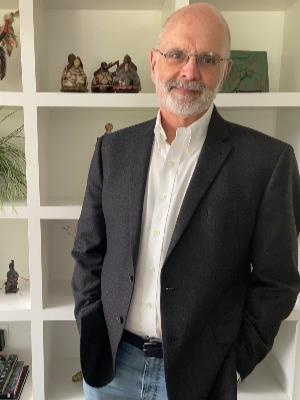
Professor Jim Walsh played a significant role in the development of work on individual, group, and collective cognition in organizations. Interested in managerial mistakes, Walsh wanted to know if executives’ worldviews could blind them to their decision environments. He was also interested in learning how the cognitive capabilities of both leadership teams and the organization itself could be harnessed for the good of organizations. In a 1988 Academy of Management Journal article, Walsh traced how these belief structures might or might not blind executives to their decision environments. He also considered how these belief structures may or may not combine to shape team decision-making. Therefore, he wrote a theoretical paper about these possibilities, which was published in the Journal of Management in 1986. He followed up that article with an empirical effort to measure and trace the impact of “negotiated belief structures” on decision-making (Organizational Behavior and Human Decision Processes published his findings in 1988). His thoughts then turned to the organization as a whole. He wrote a seminal paper on organizational memory, one that identified the nature of information selection, retention, and retrieval processes in organizations – for the good or ill of those organizations. That work was published in the Academy of Management Review in 1991. When interest in cognition in organizations started to grow, Walsh became a founding officer of the Academy of Management’s Managerial and Organizational Cognition Interest Group in 1990 and helped to lead that pioneering group of scholars for the first three years of its existence. Tying all of the insights and experiences together, he wrote what became something of a field-defining scholarly paper in 1995. Titled “Managerial Organizational Cognition: Notes from a Trip Down Memory Lane,” it was published in Organization Science. Today the Managerial and Organizational Cognition Division of the Academy of Management is home to more than 1,200 scholars worldwide. Citing his foundational scholarship and early leadership, the Division honored Jim with its Distinguished Scholar Award in 2020.

Professor C.K. Prahalad was the major pioneer and advocate of the 'bottom of the pyramid' proposition that selling to the poor can simultaneously be profitable and help eradicate poverty. While appealing, the BOP proposition is also controversial. Professor Aneel Karnani was an early and prominent critic of the BOP proposition. In his 2007 article "The Mirage of Marketing to the Bottom of the Pyramid" and his 2011 book Fighting Poverty Together: Rethinking Strategies for Business, Governments, and Civil Society to Reduce Poverty, he argues for an alternative perspective. Rather than viewing the poor primarily as consumers, it is better to focus on the poor as producers and to emphasize buying from the poor. Both the private sector and government have a critical role to play in alleviating poverty. The best way to alleviate poverty is to raise the real income of the poor by providing them appropriate employment opportunities. The private sector is the best engine of job creation. The government should facilitate the creation and growth of private enterprises in labor-intensive sectors of the economy. The government should also fulfill its traditional, accepted functions of providing adequate access to public services, such as education, public health, drinkable water, sanitation, security, and infrastructure.
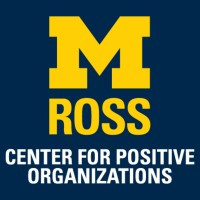
The late 1990s ushered in a revolutionary view across the social sciences centered around the power and importance of studying strengths, better understanding how people thrive, and how systems seize opportunities for creating excellence. Michigan Ross led the way in advancing this fundamental research shift in the field of management and organizations, with many scholars publishing seminal research in the field. In 2002, three faculty members, Jane Dutton, Bob Quinn, and Kim Cameron, founded the Center for Positive Organizations to encourage rigor in this growing field of research and to serve as a home for a large network of scholars interested in pursuing this line of inquiry. As the field has grown over the years, Positive Organizational Scholarship has influenced how management is taught and practiced. CPO at Michigan Ross is a leader in helping teachers and students tap into this body of evidence and learn about this research through innovative courses and developmental learning programs. Those tools include the "Reciprocity Ring", a dynamic group exercise that applies the “pay-it-forward” principle while creating high-quality connections, and the "Reflected Best Self Exercise", which helps you see who you are at your best to engage you to live and work from that powerful place daily.
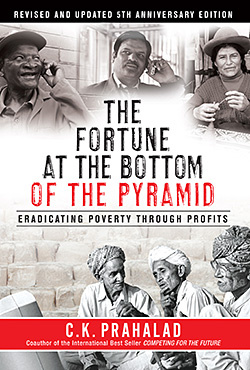
In 2002, Professor C.K. Prahalad of the Michigan Ross Business School and professor Stuart L. Hart of the University of North Carolina Kenan-Flagler Business School published the iconic article "The Fortune at the Bottom of the Pyramid" in Strategy+Business. The article suggested that "low-income markets present a prodigious opportunity for the world's wealthiest companies - to seek their fortunes and bring prosperity to the aspiring poor." Prahalad published a book with the same title five years before he passed in 2010. The article and book, with additional research and publications by Prahalad, Hart, Michigan Ross Professor Ted London, and others spawned a new business strategy for human development that has transformed into a social movement around the world known as Base of the Pyramid. The movement now includes transnationals, non-profits, social entrepreneurs, grassroots development organizations, international aid agencies, and many consulting firms dedicated to BoP strategy and implementation.

Launched in 2014 by Michigan Ross and the Zell Lurie Institute for Entrepreneurial Studies, the Desai Accelerator is dedicated to advancing U-M alumni entrepreneurial ventures. The Accelerator provides the physical infrastructure, financial resources, and mentorship to support alumni startups as they reach the critical phase between early-stage development and the point at which they seek external investors.
At Desai Accelerator, startups can access a wide network of experienced advisors, including entrepreneurial mentors, industry experts, venture capitalists, angel investors, and other business leaders. To engage students, Desai offers internships for undergraduates and graduates from all U-M schools and colleges. The Desai Accelerator program runs an annual cohort that supports passionate entrepreneurs as they advance their early-stage ventures. Startups accepted into the program receive funding, tailored mentorship opportunities, national visibility, and other resources to support their success.
The Desai Accelerator has invested more than $1 million in 44 startup ventures on behalf of the University of Michigan and has engaged 75+ student interns. Funding and support for the Accelerator are provided by the Desai Sethi Family Foundation, the William Davidson Foundation, and the Wadhams Family Foundation.

In the 1990s, a research team at Michigan Ross, led by Emeritus Professor Claes Fornell, created the American Customer Satisfaction Index. This groundbreaking project included Professors Eugene Anderson and Michael Johnson, as well as Research Scientist Jaesumg Cha and Barbara Everitt, former director of the U.S. Census Bureau.
ACSI represents a paradigm shift in measuring market performance, offering a more complete view of firms, industries, and economies and treats customer satisfaction as a latent construct connecting expectations, perceived quality and perceived value, through customer satisfaction, to customer voice and loyalty. For the past three decades, ACSI has catalyzed a wealth of peer-reviewed research in marketing and business. Empirical studies consistently find ACSI positively associated with profitability, cash flows, stock returns, credit ratings, positive earnings surprises, revenue, gross margins, return on investment, cash flow stability, and operating margins. Greater ACSI is also associated with lower cost of capital, cost of debt, and selling costs. At a macro level, ACSI is found to be predictive of gross domestic product.
Published research by the ACSI team enjoys wide recognition, garnering more than 100,000 citations. Additionally, ACSI-related research has played an outsized role in establishing customer satisfaction as an essential metric within firms' management information systems, priority setting, and key performance indicators.

The paper "CONWIP: a pull alternative to kanban" by Professor Wally Hopp and coauthors, published in The International Journal of Production Research in 1990, presents an innovative production control method known as Constant Work-In-Process. CONWIP represents a notable advance over the well-known Kanban approach of the Toyota Production System that outperforms Kanban under a wide range of settings, is more adaptable to variability, and, unlike Kanban, is suited to environments with a large number of products. The path-breaking analysis of this paper spurred a significant stream of research into the performance of pull production systems that continues to this day. CONWIP has also become a standard part of the operations lexicon and has seen widespread application in industrial settings. Finally, CONWIP was an essential building block of the science of manufacturing that Wally and others introduced as Factory Physics in subsequent work.

Established by Samuel Zell and Ann Lurie in 1999 as the first entrepreneurial studies program at the University of Michigan, the Zell Lurie Institute for Entrepreneurial Studies plays a vital role in developing the next generation of entrepreneurs and venture investors. The Institute offers various programs, competitions, and academic courses that give students the knowledge, skills, and motivation to develop a growth mindset and succeed as entrepreneurs.
Since its inception, the Institute has supported more than 9,100 entrepreneurs. It provides students with hands-on experience in entrepreneurial environments where they create, lead, and shape innovative ventures.
The Institute also supports venture investing and plays a key role in connecting entrepreneurs with venture capital and grant funding. This access to funding is crucial for entrepreneurs looking to start or scale their businesses and allows Ross students to act as real venture capitalists.

The Carson Scholars Program at Michigan Ross is a signature feature of the Ross BBA Program and a result of the vision and generosity of David Carson, BBA '55. Carson, the former president of People's Savings Bank in Connecticut, was recognized by Forbes as one of the 500 most powerful people in the corporate United States. Based on his experiences throughout his career, Carson realized that future business leaders should understand how government works to develop effective corporate strategies for participating in the public policy arena. As a result, CSP enables Ross undergraduates to augment their on-campus learning with study in Washington, D.C., where they meet with elected officials, government experts, industry leaders, issue advocates, and lobbyists. Since its foundation in 2005, the program has enabled more than 1,000 alumni to learn about the public policy process from these experts.

Associate Professor Anant Nyshadham co-founded and co-directs the Good Business Lab, a labor research and innovation lab whose work to identify workplace tools and interventions to deliver both impact to workers and returns to employers has quickly expanded across four continents over the last decade. Designed and tested through rigorous randomized controlled trials in real-world workplaces, GBL has developed several tools for rapid and broad scale. GBL's worker voice tool, Inache, has been proven to improve worker retention, reduce absenteeism, and increase worker productivity in manufacturing settings. Similarly, the tool Pratibha is a tablet-based screening and training tool for frontline supervisors that measures and addresses soft skill deficiencies and has been proven to improve the retention of supervisors and dramatically and sustainably raise the productivity of workers in factories. The Bill and Melinda Gates Foundation recently awarded GBL a multi-million dollar grant to scale these tools to more than a million workers in the next two years.

Professor Joel Slemrod has worked on an agenda to broaden the scope of tax analysis to address several issues that standard economics models of taxation ignore. He has written several articles analyzing and addressing the blind spots of standard economics models and has co-authored a book titled Tax Systems, which outlines the implications of these blind spots. The influence of his work is demonstrated by the recent policy attention given to tax enforcement in the United States and other countries, such as an increase in funding appropriated to the IRS to reduce evasion of high-income individuals and corporations, as well as innovative administrative policy developments through the U.S. Foreign Account Tax Compliance Act and the OECD Pillars One and Two, which subjects a group of large multinational companies to a global minimum corporate tax of 15%. Slemrod's work has received over 35,000 citations, numerous awards and accolades, and a No. 1 ranking among public finance economists per the Research Papers In Economics site.

